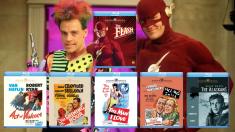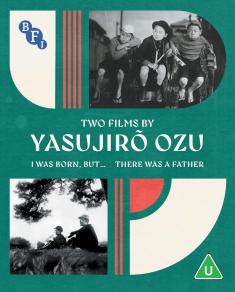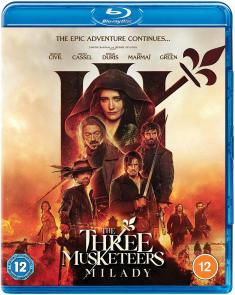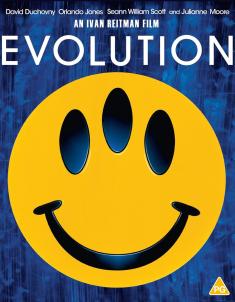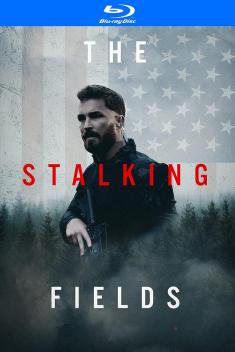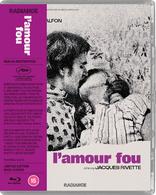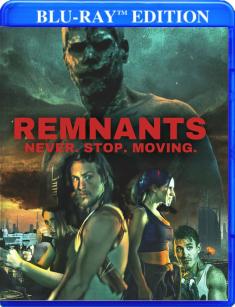Stagecoach (1939)
Overview -
This is where it all started. John Ford’s smash hit and enduring masterpiece Stagecoach revolutionized the western, elevating it from B movie to the A-list. The quintessential tale of a group of strangers thrown together into extraordinary circumstances—traveling a dangerous route from Arizona to New Mexico—Stagecoach features outstanding performances from Hollywood stalwarts Claire Trevor, John Carradine, Thomas Mitchell, and, of course, John Wayne, in his first starring role for Ford, as the daredevil outlaw the Ringo Kid. Superbly shot and tightly edited, Stagecoach (Ford’s first trip to Monument Valley) is Hollywood storytelling at its finest.
Storyline: Our Reviewer's Take
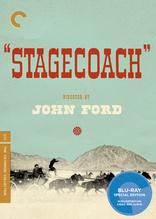
Few films are as influential as John Ford's 'Stagecoach.' And you don't really think about it being this touchstone of modern cinema until you watch it again. That's when you're struck not only by its enduring narrative power after all these years (and countless imitators), but how influential it was and is to cinema. Literally, everything from 'Citizen Kane' to 'Serenity' bears the mark of 'Stagecoach.'
'Stagecoach' was legendary director John Ford's first western in 13 years and his first western with sound. In the years since Ford made his bread and butter in westerns, the genre had fallen out of favor. With 'Stagecoach,' he brought it back, brilliantly, with the help of panoramic scenery and a bright young star named John Wayne, who at the time had only one minor film role under his belt.
The film's plot is pretty standard (this was 1939 after all). It begins in Tonto, in the Arizona Territory, in 1880. Stage driver Buck (Andy Devine) gets to town just as Dallas (Claire Trevor), a prostitute, and Doc Boone (Thomas Mitchell), a drunk, deadbeat doctor, are being run out of town. Together with Lucy (Louse Platt), off to see her husband, and a whiskey seller named Sam Peacock (Donald Meek), they set off eastbound for Lordsburg, New Mexico Territory.
There are a number of complications that meet the stagecoach, not the least of which comes from within: Marshal Wilson (George Bancroft) is on the stagecoach to look for a notorious outlaw, the Ringo Kid (John Wayne). He nabs the Ringo Kid fairly early in the movie, and his presence (and John Wayne's iconic performance, aided by Bert Glennon's phenomenal cinematography) certainly adds another layer of intrigue and conflict.
Speaking of intrigue, there are numerous characters and minor conflicts that arise on their trip to Lordsburg, including a duplicitous banker and some very bad men waiting for the stagecoach in Lordsburg. Oh, and Indians. There are Indians on their trail, which leads to a breathlessly realized action sequence late in the movie.
'Stagecoach' is compulsively watchable. Part of this is John Ford's deft direction, his return to the genre he helped solidify with sophistication and grace. Notice his distrust from the outset of the banking community (even before we learn that the banker is a crook), the way he gives every sequence a kind of long distance depth, and the way he shot the open west, in Monument Valley, which officially opened up the western genre beyond the dusty Hollywood back lots and Californian terrain.
And then there's John Wayne. Seeing Wayne, so fresh faced and new, is amazing. He commands the film every time he's on screen, and when he's not, you're kind of wondering where he went. Few times can you say you're watching a screen icon being born. But 'Stagecoach' is one of those rare experiences.
The Blu-ray: Vital Disc Stats
The 50GB Blu-ray disc is Region A locked. It doesn't automatically play. This being a Criterion disc, it's packaged in a chunkier box and comes with a spine number of 516.
Video Review

The 1080p AVC MPEG-4 transfer (maintaining the film's original 1.37:1 aspect ratio) is something of a marvel.
As the movie began I thought to myself, "Hmmm, this transfer doesn't look all that great." There was an occasional run in the film, and there were moments of heavy grain. Then, as I was going through the special features, I watched the original theatrical trailer and saw how bad this transfer could have been: washed out, faded, generally indecipherable. I watched the movie again at this point, and was positively gobsmacked. This may not look reference quality, but it could have looked a lot worse.
The booklet shares the following story: "The original negative for 'Stagecoach' has been considered lost for decades. For this edition, we evaluated several of the best surviving prints, both restored and original, before we found a 1942 nitrate duplicate negative that showed exceptional detail, gray scale, and clarity. We chose it as the primary source for this new high-definition digital transfer… because we believe it was the best surviving film material of 'Stagecoach.' For safety, a new 35 mm fine-grain positive was made from the negative as a preservation."
It continues, making note of certain things that could not be scrubbed clean: "Inevitably, certain defects remain. The picture suffered from thousands of instances of blended-in scratches and debris, especially around reel changes and in action sequences. In cases where the damage was not fixable without leaving traces of our restoration work (Like digital noise reduction and the like), we elected to leave the original damage. Through hundreds of hours of restoration work, we've manually removed the worst of the damage, along with dirt, splices, warps, jitter, and flicker…"
In other words, a whole lot of time was devoted to 'Stagecoach,' and it shows. The gray scale is impressive, for sure, with the blacks in this black-and-white movie looking particularly black. What's really striking is the amount of depth that's expressed with this image. Corridors seem to stretch on forever, ditto the picturesque landscapes. And despite the muddled nature of the action sequences, they still hop along vividly.
While I was expecting a lot more from this disc, it's not the disaster some are painting it to be. You have to weigh your options on this – would you rather the picture look better but be compromised by the muddy effects of digital clean-up? Do you want it to look like it did when it was presented theatrically in 1939 or how it should look in 2010, zipping through your high definition home theater system?
The debate will undoubtedly rage but I think this transfer is quite good, with my feelings magnified after watching how lousy the trailer is. Still, more work could have been done. Black-and-white tends to be more forgiving on Blu-ray.
Audio Review

There is a lone audio option on this disc: LPCM Mono. Yes, mono; one single, solitary channel. And it sounds pretty good. Or, again, as good as it's going to sound.
Again, according to the booklet: "The monaural soundtrack was mastered from multiple track elements, including soundtrack negatives and prints. Clicks, thumps, hiss and hum were manually removed… Crackle was attenuated…" So, again, lots of work went into making this the clearest, sharpest audio track they could.
And to be honest with you, you won't notice the minor imperfections of this audio track (as compared to the relatively major imperfections of the video). For the most part, this track sounds good. Dialogue is crisp and clear, and sound effects occasionally sound deeper and livelier than they probably should. Again, this isn't reference quality by any stretch of the imagination, but it is a fairly strong track.
There are also English SDH subtitles available on this disc.
Special Features

All the extras presented here are also available on the DVD edition Criterion is releasing simultaneously. The only "exclusive" is the "Timeline" feature that has become a standard on Criterion's high definition releases.
- Commentary by Jim Kitses Jim Kitses is a film historian and western scholar and he has a pretty amazing Southern accent. (You'd expect him to be in a Tennessee Williams play or something.) Kitses is ridiculously informed and brings a level of scholarly discourse that wisely avoids ever being too egghead-ish. If there's one complaint I have with this track it's that his commentary is so thought out (and seemingly scripted) that it becomes a bit, well, dry. Or, if we want to use a western metaphor, dusty. A little bit more spontaneity wouldn't have hurt, but it's hard to find bad things to say about this overall exemplary track.
- Bucking Broadway (HD, 55) This is a silent film that John Ford directed in 1917. It's certainly worth watching, more as a companion to 'Stagecoach' more than anything else. (It's about a cowboy who gets cock-blocked by an urban sophisticate.) This features a new score by Donald Sosin and was recently restored. Worth watching, but more for die-hards than causal film fans.
- John Ford Interview (HD, 73:29) This interview, conducted by journalist Philip Jenkinson in 1968, is long and informative and very fun to watch (even if you're just a casual fan of Ford). Ford was a character for sure, and here we get to witness him in all his cantankerous old man glory. There are a whole host of issues that the presenter and his subject touch upon. This is highly recommended.
- Peter Bogdanovich (HD, 14:17) Speaking of cantankerous old men, Bogdanovich is getting there. This video interview, newly conducted by the Criterion Collection, has the writer and director sharing his personal stories of meeting with and talking to both John Ford and John Wayne, as well as him offering his critical perspective on the cinematic importance of 'Stagecoach.' He corrects, for instance, the long held myth that 'Citizen Kane' was the first film to show a ceiling, from a low angle. 'Stagecoach' did it a couple years before. (The commentary essentially makes the same claim.)
- Dreaming of Jeanie (HD, 21:50) This might be my favorite special feature on the whole disc (which is saying something). Created by writer Tag Gallagher (who has written a book on John Ford), he analyzes the visual style and emotional capacity of 'Stagecoach.' In one particularly virtuoso moment, he describes the different way that Hitchcock would have shot a sequence in 'Stagecoach.' It includes a diagram and everything. This is somewhat off kilter special feature material but you'll be very happy that it's included.
- John Ford Home Movies (HD, 7:13) Join Ford's grandson Dan Ford (who has also written a book about John Ford – is there anyone on this disc who hasn't written a book about the legendary director?) as he takes a trip down memory lane, sharing intimate home movies. Basically, what you get out of this is that John Ford was a miserable, occasionally cruel SOB and that these happy-go-lucky home movies don't really capture the man at all. Definitely worth a watch.
- True West (HD, 10:44) Pulitzer Prize-winning author Buzz Bissinger is on hand to talk about trading post operator Harry Goulding. Goulding was the one who brought the production to Monument Valley, which helped create the next great era of Hollywood westerns (which had previously been filmed just outside of Los Angeles). He also spoke with local Indian tribes about being in the shoot. It's pretty amazing. Highly recommended.
- Yakima Canutt (HD, 10) Besides having the greatest, most 'Star Wars'-ian name ever, Yakima Canutt was an ace stuntman who did a whole bunch of stellar work for 'Stagecoach.' The appreciation is done by Vic Armstrong, who was the stunt coordinator on 'Raiders of the Lost Ark,' and talks about Canutt being so phenomenal because of his invention and ingenuity – it takes a lot to make a stunt happen, but it takes much more to come up with the stunt and see it through. Not so cool: Canutt came up with an ingenious but cruel way to trip horses.
- Screen Director's Playhouse (27:08) This is a shortened radio version of the movie, recorded a decade later, and featuring original stars John Wayne and Claire Trevor as well as grizzly director John Ford. This is definitely worth a listen.
- Trailer (HD, 3:29) Just watch this. It's so weird. It starts out talking about air travel before segueing to a seemingly unending series of scenes from the movie. And it looks so utterly awful that you'll be even more impressed with the transfer on this disc.
- "Taking the Stage" An original essay by David Cairne, an English writer and filmmaker, included in the booklet.
- "Stage to Lordsburg" This short story by Ernest Haycox, "one of America's most celebrated western authors," was published in 1937 and purchased shortly thereafter by Ford. It served as the basis for 'Stagecoach' and is included in the booklet.
'Stagecoach' remains as entertaining as ever, with a matinee idol-making turn by John Wayne and impeccable, ahead-of-its-time direction by the grouchy master John Ford. While I have some reservations about giving the video a complete pass, the AV is adequate and is more than compensated by the plethora of wholly engaging special features. This release is highly recommended, for sure. Yee-ha!
